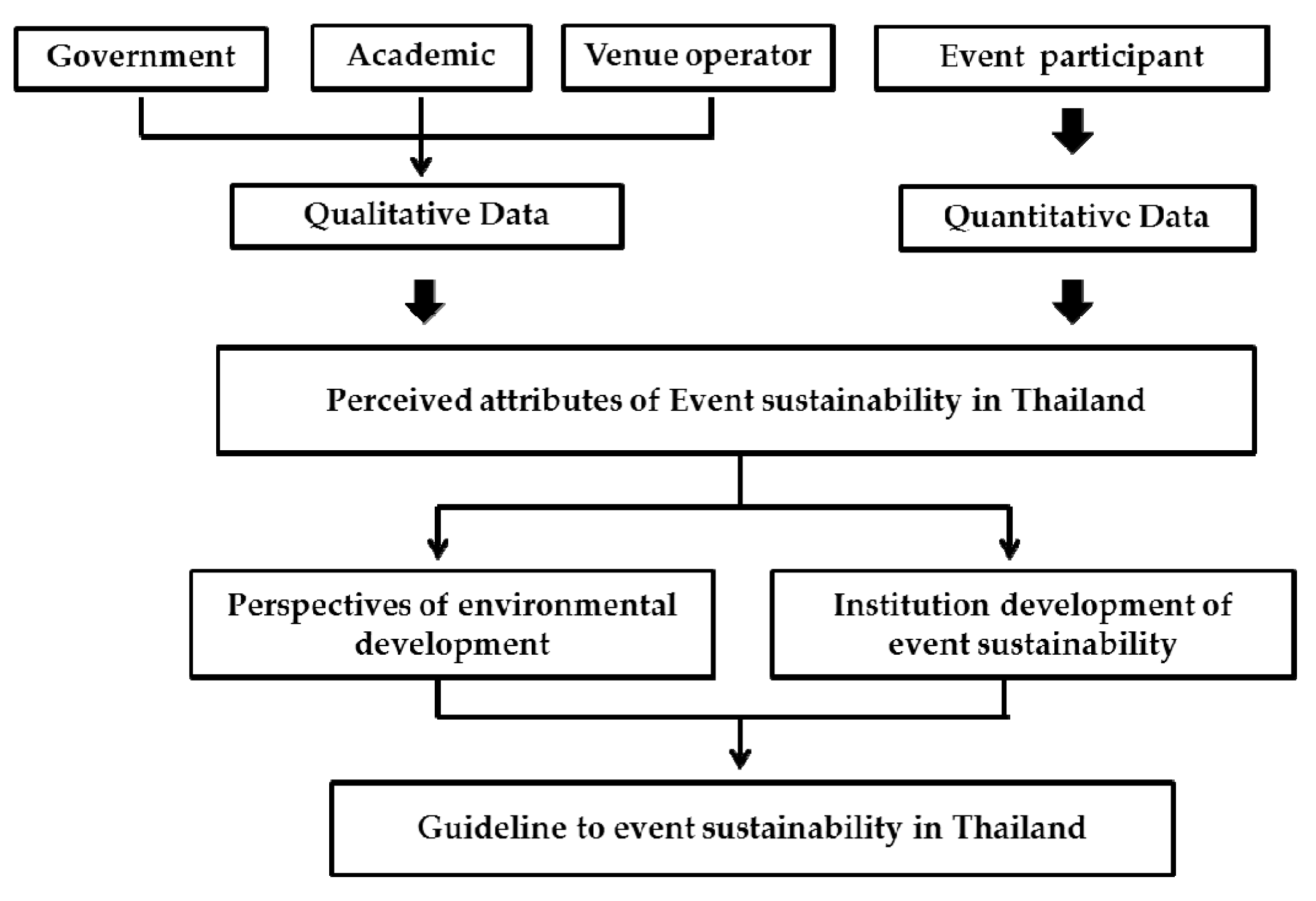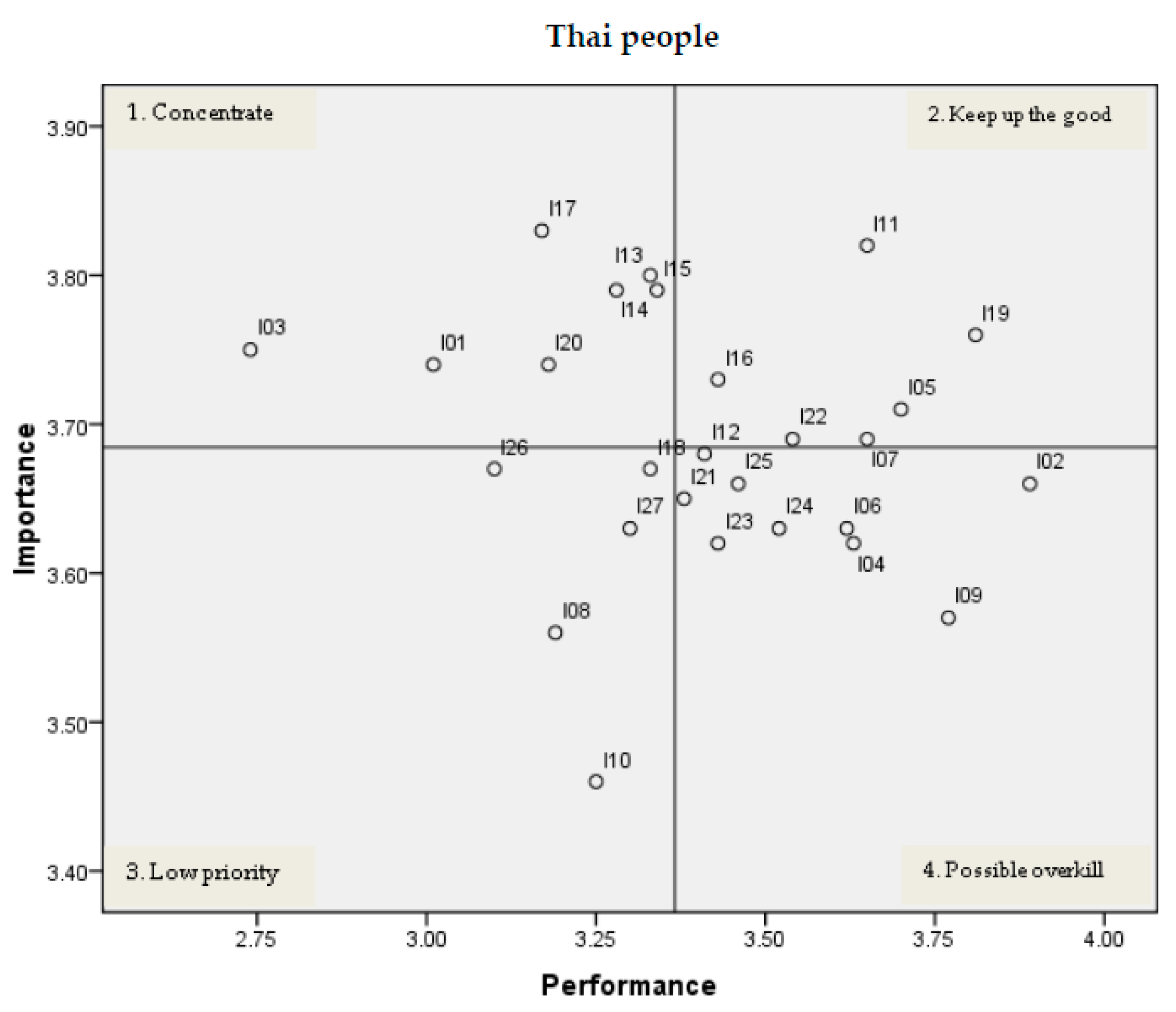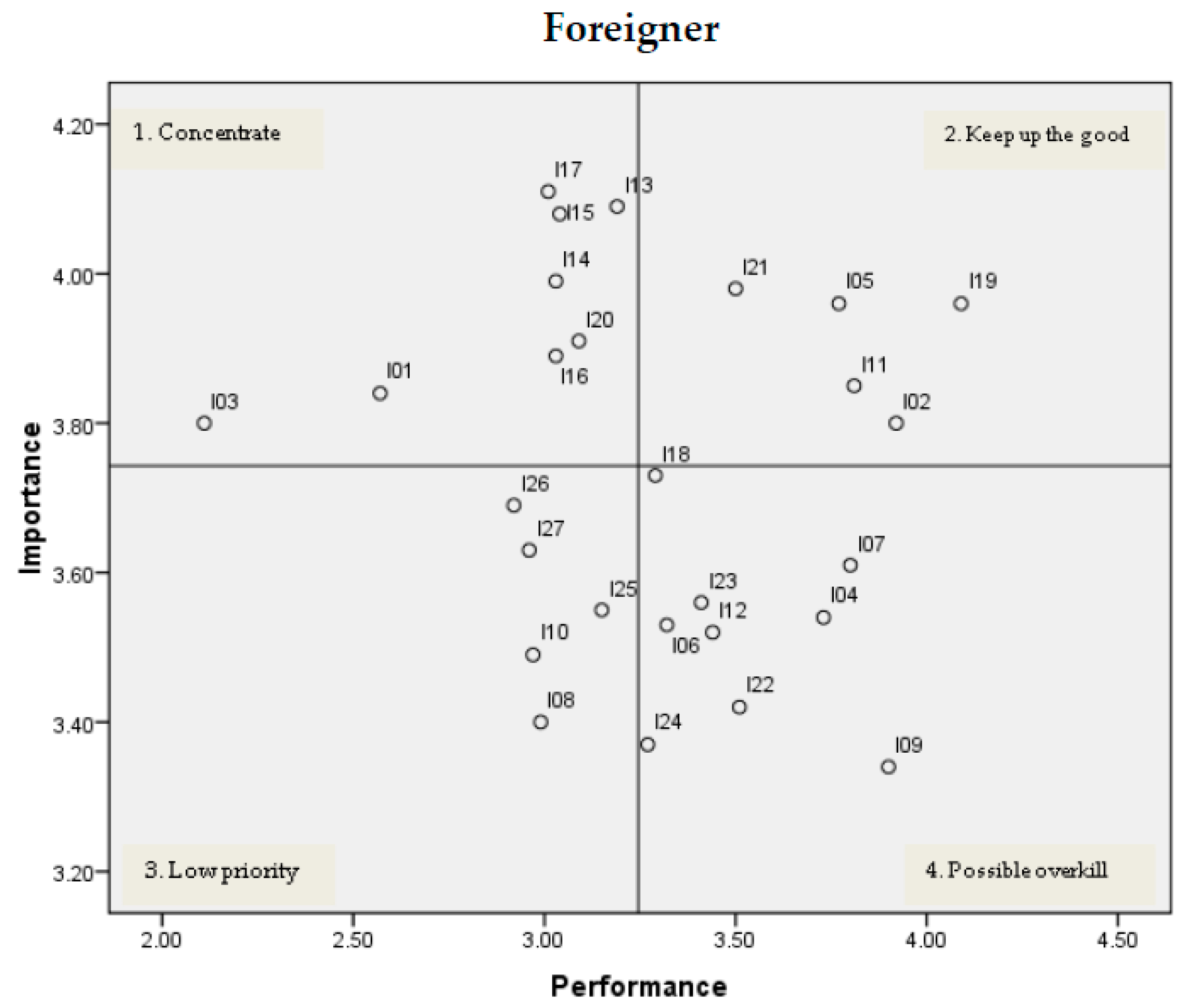1. Introduction
The acronym ’MICE’ stands for meetings, incentive travel, conventions, and exhibitions and is recognized as a significant market segment of the tourist industry at large [
1,
2,
3]. According to the International Meeting Statistics of the Union of International Associations (UIA), in 2016, there were 458,453 international meetings held worldwide [
4]. Consequently, MICE are considered to be key areas of growth for tourism industries around the globe, with high yield and higher than average daily expenditure per visitors. Over the last decade there has been substantial development in convention and meeting industries, and countries have responded by expanding the provision of facilities and infrastructure as a means to attract this lucrative share of the tourism market [
5].
The industry consists of multiple hospitality service sectors including lodging, food and beverage, catering, convention services, convention facility rentals, transportation, tourism, retail, and entertainment [
1,
6]. MICE industries also share several common characteristics with hospitality service sectors, such as inseparability of production and consumption, perishability, and seasonality. As many countries have started emphasizing the economic benefits associated with MICE activities, they have quickly attracted commercial attention—especially in Asia, where economic and trade activities experience particularly rapid growth.
MICE industries play an important role in Thailand’s tourism sector. Already recognized as a prime tourist destination, Thailand has been developing itself into an increasingly popular location to hold international events, both product marketing and corporate seminars. Consequently, Thailand’s MICE sector has seen strong growth in recent years. In 2012, it welcomed 895,224 MICE visitors to a total of 7382 MICE events, with earnings of US
$2.66 billion; thus exceeding annual targets by 19% MICE travelers from Asia have been largely responsible for this strong growth, and represented 65%of all MICE travelers that year [
7].
With an increasing emphasis placed on the idea of “green” activities, the Thailand Convention and Exhibition Bureau (TCEB) and Thai MICE players made the effort to launch the “Green Meetings Campaign” with the aim of promoting environmental responsibility. Meanwhile, they also let the campaign serve as a marketing device to attract oversea MICE businesses to the idea of organizing meetings in Thailand by offering to provide events that are unique, environmentally responsible and representative of Thai culture and hospitality.
Whilst the positive economic gain associated with holding such events should not be underestimated, it is also important give consideration to broader social aspects [
8]. Some events, for example, may be used as vehicles for delivering social messages [
9,
10] or raising awareness of certain issues. This paper attempts to fill the gap that exists between economic gain and social factors by adopting the holistic viewpoints of three stakeholders namely, attendees & exhibitors, academia and governmental policy makers, in an examination of the way in which event sustainability has developed. The study seeks to accomplish the following two research goals:
- (1)
Identify perceived attributes of sustainability practices of concern to MICE attendees and exhibitors; and
- (2)
Understand the importance implemented sustainability practices and policies in MICE industry.
Each of these questions is addressed not only through the collection and analysis but also through a thorough review of relevant literature and past research.
5. Discussion and Conclusions
Although there is some research available on the evaluation of convention service attributes [
41,
42,
43], there is little research examining the assessment of sustainable event development. This study provides empirical evidence on significant issues for event sustainability by comparing the perceptions of Thai people and foreigners on a certain set of criteria. The perceived importance according to all respondents in both the Thai and foreigner groups were studied to examine the interest and understanding that participants have towards sustainability and waste diversion. It is evident that it is not only important for meeting facilities to adopt environmentally sound policies and practices, but also that the attendees are made aware of these policies and practices.
According to meeting planners, items fit into three general categories: (1) energy efficiency; (2) recycling; and (3) sustainable policies. These specific items offer an introductory guideline for meeting planners who have clients that prefer to hold their conferences at locations which make an effort towards being environmentally friendly [
17]. The APEX/ASTM Environmentally Sustainable Meeting Standards address specific sustainable elements for nine individual areas within the meeting and event planning process: (1) Accommodation; (2) Audio/Visual; (3) Communication and Marketing Materials; (4) Destinations; (5) Exhibits; (6) Food and Beverage; (7) Meeting Venue; (8) On-site Office; and (9) Transportation [
44]. Clearly, based on the joint initiatives from the APEX/ASTM partnership, green trends are beginning to make an impact on meetings.
This research should be of interest to those involved in the event industry in Thailand and should help increase awareness towards issues of sustainable development. The discussion examined emerging issues in sustainable events development in Thailand and it was found that there are distinct patterns in the types of perception held by Thai people and foreigners regarding the importance of 27 selection criteria. The results help to create a better understanding of the way in which the event industry can develop itself while meeting expectations of sustainability, and should be of interest to related event industry practitioners and authorities in Thailand. Attention should be given to environmental education for international participants and stakeholders in the event industry, as education is one of the effective external factors leading to environmental practices [
45]. In contrast to studies of environmental behavior focusing on the impact of internal factors [
23,
46] and the controversy about the role of knowledge as an internal barrier or driver [
25,
47], some researchers assert the importance of external factors when it comes to social institutions shaping individuals’ ways of thinking and behaving. Thus, there are cases to be made for both external and internal factors as drivers for increasing awareness and facilitating practical actions [
48,
49].
This research examined the views of 500 respective attendees of 18 meeting, conference or tradeshow events in Thailand, thus cannot presume to inference on the views of attendees at all relevant conferences, nor can it speak on green perception in general due to the fact that the size of the sample is not extensive enough and the uniqueness is too great. Further studies on green perception in the event industry with focus given to meeting facilities will be important for maturing the understanding of this diverse industry. The researchers recommend that more studies be conducted on sustainable event development, with special focus given to hotels and venues in Thailand.
This research used qualitative interviews to examine the perspectives of 9 industry stakeholders regarding barriers or problems that might effect the sustainable development of the event industry in Thailand. The results of the empirical study indicate that, at present, government agencies and the private sector are involved in the event industry in Thailand and are the driving force behind sustainable event development; however, there is a number of areas that could provide further support to the cause if they were given more focus, including environmental education and course curriculum, set standards for event sustainability, improved knowledge and understanding of sustainable event development, as well as related national policies and budget management.
Figure 4 illustrates the relationship between effective attributes and shows similarities in views of event sustainability according to the qualitative and quantitative gathered. The attributes can be arranged into 3 overarching groups comprising 7 subgroups. The concentrated overlap represented by Group 1 is categorized as the “most focused” area (Number 1). All stakeholders in the event industry are aware of and understand the attributes within its fold, including: cooperate social responsibility, knowledge, training, policy, investment, recycle/reduce/reuse, practices and green packages. Group 2 is designated as “more focused” (Number 2,3,4). These issues have drawn the attention of some parties in the sustainable event industry, but not all stakeholders. Within this group, attributes include awareness, budget, strategy, course, education, trend, criteria, certified, standard, volunteer service and maintenance. Group 3 is classified as “less focused” (Number 5,6,7), with reference given to issues with little understanding and lack of awareness. Directing focus here should serve to promote the development of event sustainability in Thailand. The often missing attributes found within this segment include research, stakeholders, support, economic development, motivation, leaders and investment.
Based on these results, the following recommendations are made to improve sustainable event development in Thailand and offer guidance to the industry as it strives to reach its potential and gain a more prominent position on the world MICE stage.
First, more environmental education and course curriculum for meeting and event planners is necessary, as education is one of the most effective external factors leading to environmental practices [
45,
50]. If educational opportunities are offered, individual’s willingness to implement green practices will increase. This may underscore the need to use education systems to build more knowledge, which is more likely to be effective in encouraging meeting planners to behave according to environmentally friendly practices [
50]. However, simply increasing the opportunity for education may not go far enough; indeed, those who design educational programs should carefully consider the most necessary contents and best manner of presentation for industry professionals seeking advanced practices and updating their knowledge. The educational programs should engage meeting planners who have decision-making power and coordinate with stakeholders and businesses who participate in meetings or events [
50]. In short, there should be institutional support for the education and training sessions provided to meeting and event industry practitioners, with subject matter that addresses the issues of organizing green and sustainable meetings and events.
The first and only comprehensive standards for environmentally sustainable meetings was created under a partnership between the Convention Industry Council’s Accepted Practices Exchange (CIC APEX) and the American Society for Testing and Materials (ASTM) International. These standards are composed of nine individual items (sometimes referred to as “sectors”) that address the scope of the meeting and event planning process. Their approval for publication by ASTM International, means that they are recognized by an ANSI-accredited (American National Standards Institute) international standards setting organization [
51]. In addition to this initiative, the MEEC industry recognizes that there are many other governing bodies available to help those that plan, host, and supply meetings. The International Association of Conference Centers (IACC) has a “Code of Sustainability” that provides sustainability guidelines for convention centers. The Partnership for Global Sustainable Tourism has a list of criteria not only applicable to accommodations and tour operations, but to tourism in general. However, all of these certifications, guidelines, and recommended practices are created by different programs with different sets of sustainable criteria [
52]. Today, third-party validated green certification and eco-labels are everywhere, serving to verify that a product or service meets a specific set of green standards [
53]. The Eco-label Index currently tracks 435 eco-labels many of which are in competition with one another. Duke University’s Corporate Sustainability Initiative estimates that between 25% and 33% of all eco-labels are redundant (Corporate Sustainability Initiative. This can offer advantages as well as disadvantages; because, although it can ensure the highest of standards it can also be confusing to consumers. Nevertheless, green certification is a good indicator that specific environmental claims have been verified by an entity other than the establishment itself [
53].
The finding of that there is a lack of knowledge and understanding of event sustainable development indicates that among those who are involved in the MICE industry in Thailand, there is a need to enhance the level of knowledge of the key concepts and issues of greening in the industry. In particular, meeting planners are encouraged to be aware of the widely adopted environmental certification schemes as means of rewarding ecological actions and possessing adequate knowledge on the issue [
50], With education systems offering the most likely solution to providing the type of training needed, emphasis should be given to developing programs which can effectively encourage meeting planners to behave in an environmentally friendly manner [
50]. Encouragement of awareness of environmental issues among stakeholders and promotion of good communication are the most significant ways to contribute to the furtherance of greening in the meeting and event industry [
9,
50]. In Tinnish and Mangal’s [
54] discussion of the consumer market, they noted that sensitivity to issues related to sustainability does not always translate into purchasing behavior. It is the responsibility of sustainable event marketers to use the meeting’s communications, messaging, and promotional tools to transform participants’ mindsets into actions, behavior, and activities. By creating a sustainable event, planners can change behavior. Participants can be provided with behavior cues through the messaging and the execution of the event. Though stakeholders, employees and suppliers are important in value alignment, another critical group is senior management. Planners must recognize that investigating the values, attitudes, and behaviors of senior managers toward sustainability can enhance understanding of the challenges related to implementing event sustainability within organizations, and can help drive the integration of sustainability into activities [
54]. Meeting attendees were willing to pay more if the convention center staff was educated on sustainable options within the convention center. This due to the inconveniences that arise from the lack of standardized certifications and the overwhelming influx of information with regard to green and sustainable issues. Strick and Fenich [
51] note that it is difficult for both planners and attendees to determine which certifications are credible and which are not; therefore, having an educated staff available might be the next best alternative. Strick and Fenich [
51] also state that research is necessary for consumers to fully understand the existing certifications available; so again, an educated staff available to answer questions might be a more appealing option for attendees.
With respect to the issues regarding policy and budget management, Thailand has been negatively impacted by the problems of political instability and terrorism in the southern part of the country. These events have been frequently reported by the international media and other secondary information sources, and are among the major factors making Thailand a less attractive destination [
38,
55]. Indeed, the political stability of the host nation is a very important point of consideration for international MICE organizations [
38,
56]. The government should take full responsibility and conduct appropriate action to avoid a worsening of crises [
38]. Additionally, widely recognized certification schemes, along with industry partnerships, operate as stimuli to many stakeholders, encouraging them to participate in green-friendly practices [
50]. Previous research has noted that financial issues (both cost and time involved) have emerged as major barriers to greening [
21,
50]. The results from this study offer convention centers suggestions on the variables associated with site selection from a “green” perspective. Considering the positive impact meetings and conventions can have on local economies [
57,
58], the MICE industry should be looking at the issue of sustainability as an opportunity to increase competitive advantage and secure business. While including all of the elements comprised in programs such as the Green Globe Certification may not be feasible, convention and meeting venues, as well as meeting planners, should consider incorporating as many sustainable practices as they reasonably cane [
18]. These plans, beginning from information-based approaches and moving to action-based approaches, could be applied to the case of Thailand to help prepare for concerned parties to take appropriate actions and building confidence among international prospects [
38].
This study recognizes the limits it was subject to due to constraints in time and resources. Purposive sampling was used together with the recommendations of tourism/event scholars to identify key informants; however, it is noted that such an approach may not cover a wide enough representation of exhibitors and participants in the event industry. The event industry should be looking at the issue sustainability to give them an added competitive advantage in securing business. And although including all of the elements of programs such as the Green Globe Certification may not be feasible, convention and meeting venues, as well as meeting planners, should consider incorporating aspects of sustainable practices that are at least reasonable. Further studies on green perceptions within the event industry in terms of meeting facilities will be important for enabling a fuller understanding of this diverse industry. The researcher recommends more studies be conducted involving event sustainable development, with special focus given to hotels and venues in Thailand.








